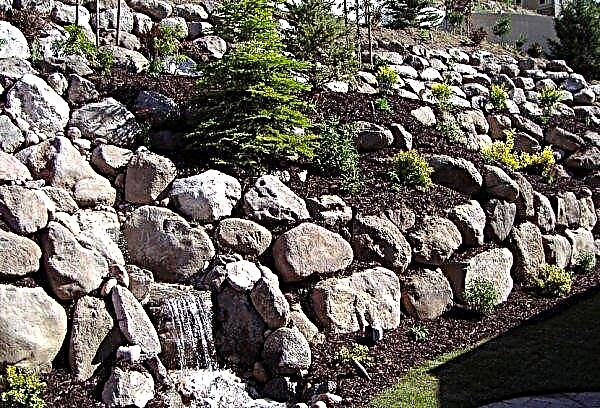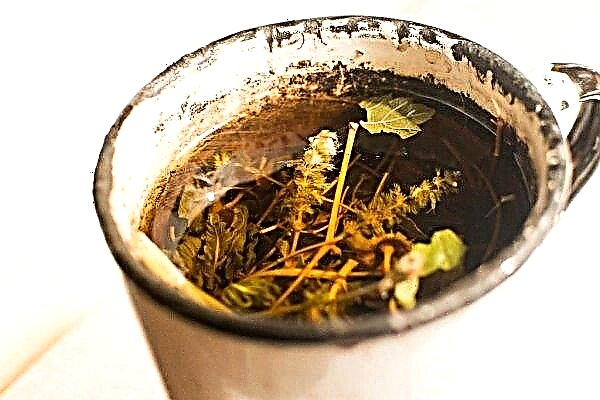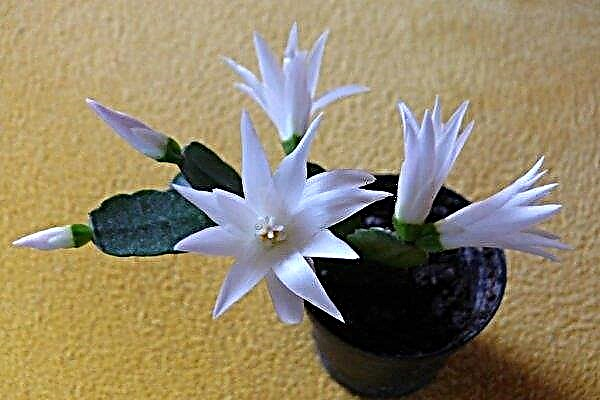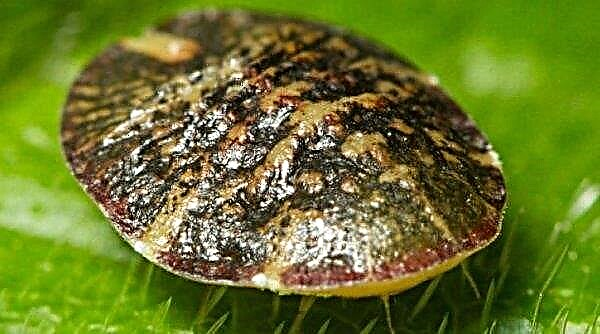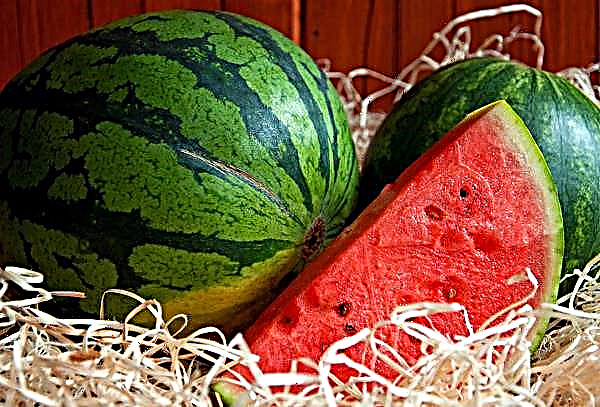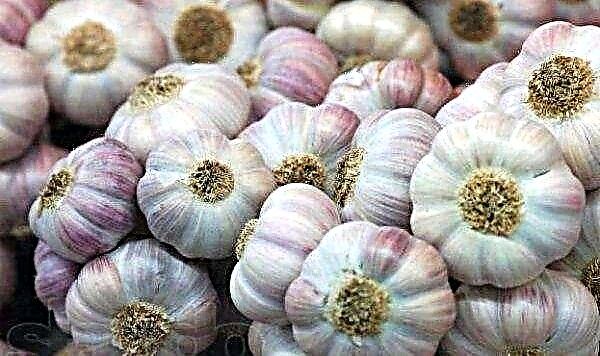If the pepper begins to rot, this indicates a violation of the rules of care. Pepper - demanding culture and improper cultivation leads to the fact that the seedlings will wither and wither, the inflorescences will fall, and the fruits will rot. Why is this happening, and what to do with such a problem? Let's get it right.
Basic rules for growing peppers
Pepper refers to heat-loving plants that require certain conditions and care. If the rules are violated, the culture will react with weakened development and a decrease in immunity.
Did you know? Hot pepper was not always like that. This property is acquired in the process of evolution. Thus, the plant protects itself from animals and attracts birds on which the burning substance does not act. The bottom line is that pepper seeds, passing through the body of birds, remain intact.
In the greenhouse
To grow pepper in a sheltered ground, the following conditions must be observed:
- maintain the soil in a loose state;
- observe humidity in the greenhouse not more than 60%;
- water the soil as it dries;
- make fertilizers on time;
- observe the ventilation mode;
- ensure that the temperature of the soil is within + 25 ° C.

In the open ground
Pepper (including hot) is a thermophilic plant.
And if it is possible to maintain the temperature regime in greenhouse conditions, then in open ground for growing a crop, it is necessary to observe such conditions:
- good illumination of the site;
- a large number of fertilizers;
- regular and moderate soil moisture.

Why pepper rots on a bush and what to do
The most common causes of rot on peppers are damage to fungal and infectious diseases. Therefore, it is important to recognize each of them, so that in time to begin to fight for the bush and the crop.
Late blight
Factors contributing to the onset of late blight:
- thickening of landings;
- high level of air humidity (more than 60%);
- sudden changes in temperature;
- lack of regular ventilation.

If late blight is detected, diseased specimens are urgently removed from the garden and destroyed. After that, the bushes are treated with a 1% solution of Bordeaux fluid or Fitosporin. The last drug is available in liquid form and powder. 5 g of powder is diluted with a bucket of water. 1.5 tbsp. l the resulting mixture is added to a bucket of water before use.
Important! Solutions are used immediately after preparation.
Among folk remedies, tincture of garlic with the addition of potassium permanganate effectively fights late blight. For 10 liters of water you need to take 2-3 heads of garlic, chop it and add 1 g of potassium permanganate.
White rot
This trouble appears with excess moisture. Therefore, the main reason for the appearance of white rot is excessive watering. The disease may also appear as a result of a violation of the rules for fertilizing (in particular - nitrogen).
White rot is born on the vine, and as it grows, it rises higher, on the stem, leaves and fruits. A sign is a white coating on the affected parts of the plant.
They are struggling with the disease with copper-containing preparations (Oksikhom, vitriol, Abiga-peak, Bordeaux mixture, etc.).
From folk remedies, it is effective to use chalk and coal. Grind them into powder and sprinkle the affected areas.
Alternariosis or dry spotting
A fungal disease that occurs as a result of dry air. Alternariosis affects the stem and roots of pepper.
Did you know? The first to grow pepper began the Aztecs and Mayans. They used burning fruits as a substitute for salt, and sweet ones as a vegetable. This culture even had its own deity - Chantico, the wife of the god of fire. According to legend, she ate fish during fasting and was turned into a dog.
First, brown spots appear on the leaves, which subsequently pass on to the fruits. On pepper you can find areas resembling a white fluff. Later they turn black. If treatment is not started, at the final stage of development of alternariosis, the fruits are simply mummified.
To the question “how to treat” diseased plants, experienced gardeners answer: with a mixture of Bordeaux liquid, copper sulphate and lime, as well as with Polyram, Bravo, Quadrice preparations. Copper-containing preparations give a good result.
There are no effective folk ways to combat alternariosis, therefore, it is recommended that you follow the rules of agricultural technology: maintain crop rotation, fertilize, regularly weed and harvest weeds.
Anthracnose
A fungal disease that affects peppers at any stage of the growing season and affects both the green part of the bush and the fruits. First, watery dark spots appear on one edge of the pepper, and then the fruit rots completely.
The treatment is carried out with copper-containing preparations (copper sulfate, Kuproksat, Fundazol, Previkur, etc.). Bushes are treated 2-3 times with an interval of 10-20 days.
Unfortunately, folk remedies against fungus are ineffective.

Vertex rot
The most dangerous problem. The causative agent of the disease is the virus.
Apex rot is born at the moment when the pepper is just starting to grow. First, spots appear on the tip of the fetus (hence the name of the disease). At first, the specks are watery, then they become rough and dark.
Important! Fruits affected by vertex rot cannot be eaten: their taste is poor and there will be no benefit from such pepper.
The main reason a plant may be affected is adverse conditions (moisture or calcium deficiency, as well as an excess of nitrogen).
Immediately after detecting signs, watering should be adjusted. If this event has not yielded results, the bushes are treated with calcium nitrate.
When the top rot has already struck reddened peppers, you can use such folk remedies:
- Milk. For 10 liters of water take 1 liter of milk, mix well. The solution is processed greens and fruits every 7 days. Repeat the procedure 2-3 times.
- Eggshell. Finely crush into powder and sprinkle the holes before planting seedlings.
- a piece of chalk. Crush into powder, dilute in a liter of warm water and pour the solution over the affected plants.
Video: Pepper Rot Rot
Gray rot
The disease manifests itself in the form of whitish spots, which can be either wet or covered with fluff. Later, the leaves fall off and the fruits become stained. The main reason for the appearance of gray rot is a violation of the humidity regime.
Fighting the disease is possible only at the beginning of its development. For this, once every 10 days, the bushes are treated with copper-containing preparations (Bordeaux fluid, Kuproksat, Fitosporin, copper sulfate, etc. Also, the soil is disinfected with a weak solution of potassium permanganate.
Folk methods involve the use of ash and copper sulphate (for 10 liters of water - a glass of ash and 1 part vitriol). Recipes using soda against gray rot are ineffective, but another method is proposed: a glass of wood ash is dissolved in a bucket of water and 10 drops of iodine are added. The resulting solution is treated with bushes.Important! When harvesting, it is impossible to use chemicals, it is better to use biological products or alternative recipes.

Preventive measures
In order to wait for the harvest and maintain it in integrity, you should carefully monitor the bushes and prevent the development of diseases.
To do this, adhere to such recommendations:
- After harvesting, you should not only remove the residues, but also disinfect and fertilize the soil.
- Choose only healthy seed. If the seeds were kept cold before planting, they are given time to warm up before sowing. 30-40 days before planting, seed bags are placed for several days near the battery.
- Be sure to disinfect the seeds with a manganese solution, and then dry them.
- When growing pepper in greenhouse conditions, the regime of temperature and humidity should be observed.
- Seeds are best taken from trusted manufacturers.
- You can not plant peppers in one place for more than three years in a row.
- Thicken planting should be avoided.
- Weed beds regularly and clean weeds. Bushes with signs of the disease should be removed immediately from the site and destroyed.
Did you know? Some varieties of pepper are so burning that even touching them causes burns. When preparing dishes from such vegetables wear rubber gloves.
To summarize, I would like to give advice: when using chemical preparations, attention should be paid to the validity period, as well as to the appropriateness of use. The fight against pepper diseases is a difficult and lengthy process. Therefore, it is important to pay attention to prevention. And do not be afraid of the problems that may arise when growing vegetables.





